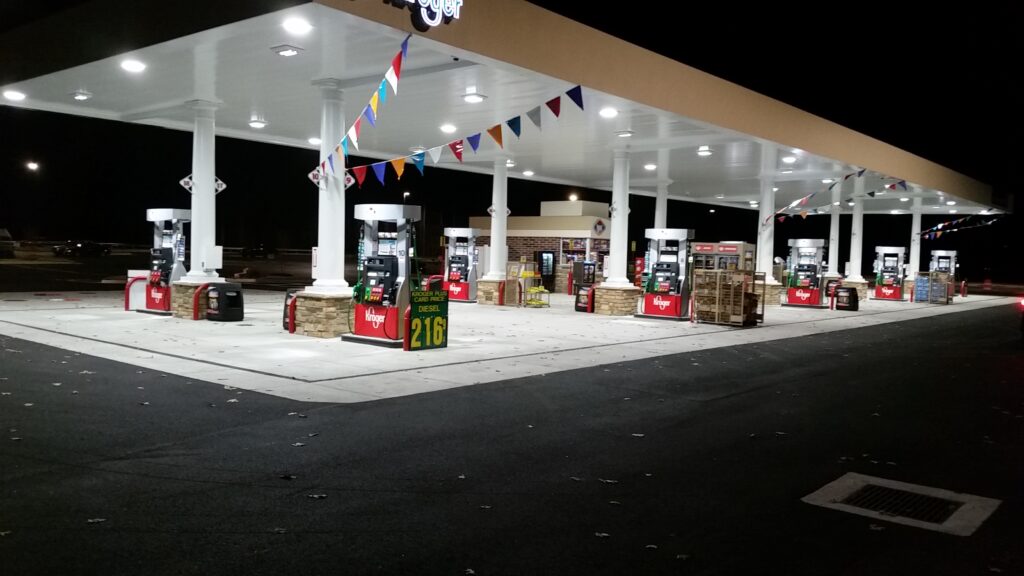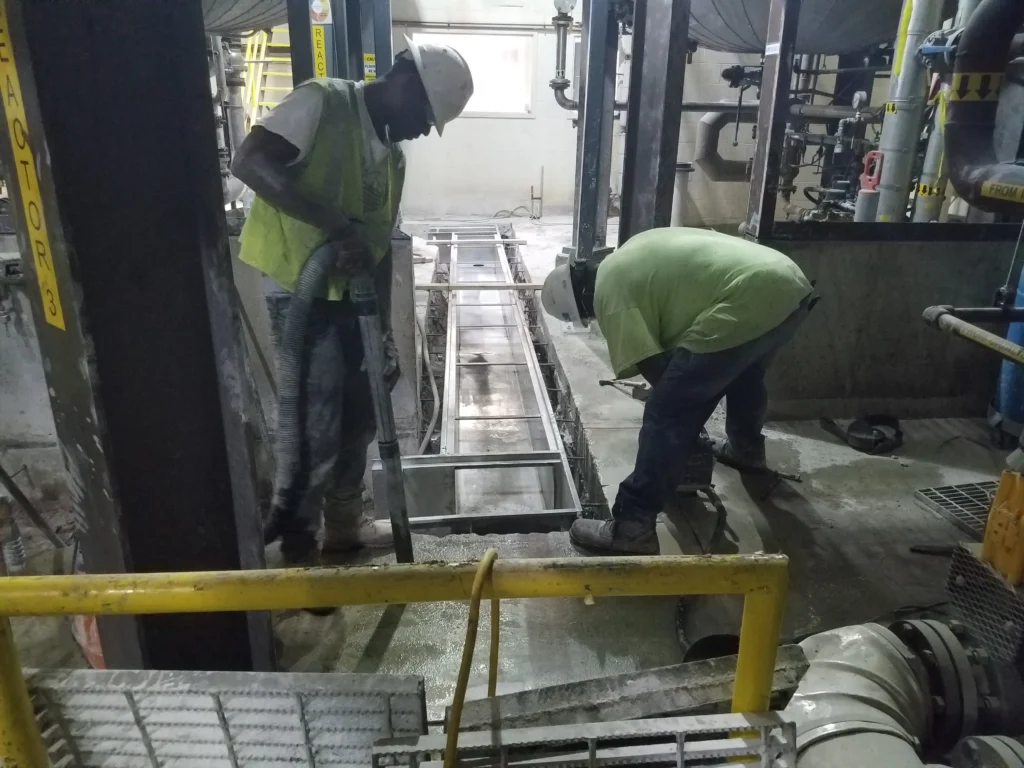Trench drains are one of the most commonly-used and installed drainage solutions on any property. That is because they are effective and affordable, and easy to care for. These kinds of drains are ideal in residential settings, but can also be utilized in factory locations, along streets, and in landscaped areas.
Trench drains have some main, standard components that are required for the drainage installation to work properly. You should know about the various parts and components of this drainage solution if you are considering installing trench drains on your property for any reason.
The Components of a Trench Drain System
1. Grate
 The trench drain grate is the “top” of the trench drain system. This grating can be designed in many different ways, from heel-proof slots, to many small holes, to large and wide slots that allow a large amount of water to flow into the trench drain below. The reason for the various designs that are offered when it comes to gratings for this kind of drainage solution is that the grate can control things like water flow, and access to the trench drain.
The trench drain grate is the “top” of the trench drain system. This grating can be designed in many different ways, from heel-proof slots, to many small holes, to large and wide slots that allow a large amount of water to flow into the trench drain below. The reason for the various designs that are offered when it comes to gratings for this kind of drainage solution is that the grate can control things like water flow, and access to the trench drain.
When foot traffic needs to pass over a drain, smaller openings and slots are necessary to prevent tripping hazards. If the trench drain is placed somewhere away from foot traffic, the gratings can often be made with wider openings to allow an increased amount of water to flow into the trench below.
A skilled drainage installer can advise you about the various kinds of gratings and help you pick the right style for your specific use case. The grating is one of the most important components of the trench drain system and needs to be selected properly for each situation so that the trench drain can perform correctly.
2. Drainage Channel

The drainage channel is the body of the trench drain that is covered up by the grating. This part of the drain can be made in many sizes and shapes. The different styles of trench drain channels impact the amount of water that the drain can collect and can also impact the strength of the drain itself.
The drainage channel will need to be different shapes or sizes depending on the intended use of the drain and the kinds of functions that are going on around it. If cars need to pass over a trench drain, for example, the drain will need to be the right size and shape to withstand this kind of weight.
Drain size and shape have a lot to do with the location of a drain and the maximum water flow that is expected in a specific area of your property or outbuildings. You need to know these kinds of details in order to make sure that you are not installing trench drains that cannot handle peak water flow periods or intense winter weather.
In some cases, this part of your drainage system will require a custom design due to the slope, the demand, or the expected water volume that the trench drain will be exposed to. This is one of the various parts of planning a drainage installation that is often best left to experts in the field.
3. Catch Basin

This is a common addition to any trench drain setup. The catch basin is usually made of metal or plastic and is used to prevent flooding near the trench drains that are capturing runoff. The catch basin will hold onto additional water during high volume or flooding periods and disperse it to the drainage connections that are attached to the trench drain. Catch basins are made to hold onto water and deliver this water over time to the sewer lines and other outlets on your property. This is one of the most essential aspects of a trench drain setup that is placed in areas where flooding is common or expected.
Learn more – What is a Catch Basin in a Trench Drain System?
4. Outlet

The outlet for your trench drain system is often a sewer or a storm drain. You might not be responsible for this part of your overall drainage setup since these parts of a drainage construction are usually owned by and managed by the city or the county. However, your trench drain system does need to pair with this part of the drainage on your property correctly, or issues could arise with flooding and water not being directed away from your property correctly.The connections to the main sewer lines or storm drains on your property can be made in a variety of ways depending on the trench drain style that you have selected. A skilled drainage installer can advise you about the kinds of fittings and drainage solutions that are necessary to connect to existing drainage infrastructure. Most trench drain installations are made with this kind of end connection in mind and are standardized to fit with most common storm drain and sewer components.
Trench Drains Are Simple, But Each Component is Essential
The components of your trench drain are all critical to its function. If you have not selected all of the parts and components of your drainage system properly, your trench drain will likely end up failing over time, or you might still struggle with standing water and flooding during peak flow periods.
Working with a skilled drainage installer can help you avoid these kinds of common issues related to drainage system installation. A team of experts can advise you about the slope, the style of the drain, the right gratings, and the connections to the sewer system or storm drainage solutions that are already placed on your property.
Trench drains are highly effective drainage solutions that can be installed at an affordable price. You will find that nearly any drainage issue that you are facing on your property can be resolved with the right trench drain. These drains are easy to maintain, simple to install, and hold up for years when they are properly designed. Knowing more about their design and components will help you pick the right trench drains for your goals and needs.












